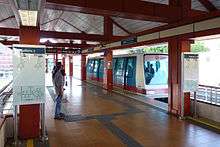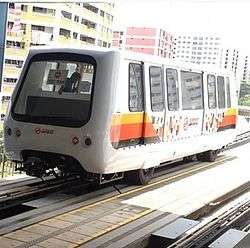Bukit Panjang LRT Line
| BPLRT Bukit Panjang LRT Line Laluan LRT Bukit Panjang 武吉班让轻轨线 பக்கிட் பஞ்சாங் வரி | |||||||||||||||||||||||||||||||||||||||||||||||||||||||||||||||||||||||||||||||||||||||||||||||||||||||||||||||||||||||||||||||||||||||||||||||||||||||||||||||||||||||||||||||||||||||||||||||||||||||||||||||||||||||||||||||||||
|---|---|---|---|---|---|---|---|---|---|---|---|---|---|---|---|---|---|---|---|---|---|---|---|---|---|---|---|---|---|---|---|---|---|---|---|---|---|---|---|---|---|---|---|---|---|---|---|---|---|---|---|---|---|---|---|---|---|---|---|---|---|---|---|---|---|---|---|---|---|---|---|---|---|---|---|---|---|---|---|---|---|---|---|---|---|---|---|---|---|---|---|---|---|---|---|---|---|---|---|---|---|---|---|---|---|---|---|---|---|---|---|---|---|---|---|---|---|---|---|---|---|---|---|---|---|---|---|---|---|---|---|---|---|---|---|---|---|---|---|---|---|---|---|---|---|---|---|---|---|---|---|---|---|---|---|---|---|---|---|---|---|---|---|---|---|---|---|---|---|---|---|---|---|---|---|---|---|---|---|---|---|---|---|---|---|---|---|---|---|---|---|---|---|---|---|---|---|---|---|---|---|---|---|---|---|---|---|---|---|---|---|---|---|---|---|---|---|---|---|---|---|---|---|---|---|---|---|
|
| |||||||||||||||||||||||||||||||||||||||||||||||||||||||||||||||||||||||||||||||||||||||||||||||||||||||||||||||||||||||||||||||||||||||||||||||||||||||||||||||||||||||||||||||||||||||||||||||||||||||||||||||||||||||||||||||||||
| Overview | |||||||||||||||||||||||||||||||||||||||||||||||||||||||||||||||||||||||||||||||||||||||||||||||||||||||||||||||||||||||||||||||||||||||||||||||||||||||||||||||||||||||||||||||||||||||||||||||||||||||||||||||||||||||||||||||||||
| Type | Light rail | ||||||||||||||||||||||||||||||||||||||||||||||||||||||||||||||||||||||||||||||||||||||||||||||||||||||||||||||||||||||||||||||||||||||||||||||||||||||||||||||||||||||||||||||||||||||||||||||||||||||||||||||||||||||||||||||||||
| System | Light Rail Transit (Singapore) | ||||||||||||||||||||||||||||||||||||||||||||||||||||||||||||||||||||||||||||||||||||||||||||||||||||||||||||||||||||||||||||||||||||||||||||||||||||||||||||||||||||||||||||||||||||||||||||||||||||||||||||||||||||||||||||||||||
| Status | Operational | ||||||||||||||||||||||||||||||||||||||||||||||||||||||||||||||||||||||||||||||||||||||||||||||||||||||||||||||||||||||||||||||||||||||||||||||||||||||||||||||||||||||||||||||||||||||||||||||||||||||||||||||||||||||||||||||||||
| Termini |
Choa Chu Kang Ten Mile Junction | ||||||||||||||||||||||||||||||||||||||||||||||||||||||||||||||||||||||||||||||||||||||||||||||||||||||||||||||||||||||||||||||||||||||||||||||||||||||||||||||||||||||||||||||||||||||||||||||||||||||||||||||||||||||||||||||||||
| Stations | 14 | ||||||||||||||||||||||||||||||||||||||||||||||||||||||||||||||||||||||||||||||||||||||||||||||||||||||||||||||||||||||||||||||||||||||||||||||||||||||||||||||||||||||||||||||||||||||||||||||||||||||||||||||||||||||||||||||||||
| Services | 3 | ||||||||||||||||||||||||||||||||||||||||||||||||||||||||||||||||||||||||||||||||||||||||||||||||||||||||||||||||||||||||||||||||||||||||||||||||||||||||||||||||||||||||||||||||||||||||||||||||||||||||||||||||||||||||||||||||||
| Daily ridership | 62,700 | ||||||||||||||||||||||||||||||||||||||||||||||||||||||||||||||||||||||||||||||||||||||||||||||||||||||||||||||||||||||||||||||||||||||||||||||||||||||||||||||||||||||||||||||||||||||||||||||||||||||||||||||||||||||||||||||||||
| Operation | |||||||||||||||||||||||||||||||||||||||||||||||||||||||||||||||||||||||||||||||||||||||||||||||||||||||||||||||||||||||||||||||||||||||||||||||||||||||||||||||||||||||||||||||||||||||||||||||||||||||||||||||||||||||||||||||||||
| Opened | 6 November 1999 | ||||||||||||||||||||||||||||||||||||||||||||||||||||||||||||||||||||||||||||||||||||||||||||||||||||||||||||||||||||||||||||||||||||||||||||||||||||||||||||||||||||||||||||||||||||||||||||||||||||||||||||||||||||||||||||||||||
| Owner | Land Transport Authority | ||||||||||||||||||||||||||||||||||||||||||||||||||||||||||||||||||||||||||||||||||||||||||||||||||||||||||||||||||||||||||||||||||||||||||||||||||||||||||||||||||||||||||||||||||||||||||||||||||||||||||||||||||||||||||||||||||
| Operator(s) | SMRT Light Rail (SMRT Corporation) | ||||||||||||||||||||||||||||||||||||||||||||||||||||||||||||||||||||||||||||||||||||||||||||||||||||||||||||||||||||||||||||||||||||||||||||||||||||||||||||||||||||||||||||||||||||||||||||||||||||||||||||||||||||||||||||||||||
| Rolling stock |
Bombardier Innovia APM 100 C801 Bombardier Innovia APM 100 C801A | ||||||||||||||||||||||||||||||||||||||||||||||||||||||||||||||||||||||||||||||||||||||||||||||||||||||||||||||||||||||||||||||||||||||||||||||||||||||||||||||||||||||||||||||||||||||||||||||||||||||||||||||||||||||||||||||||||
| Technical | |||||||||||||||||||||||||||||||||||||||||||||||||||||||||||||||||||||||||||||||||||||||||||||||||||||||||||||||||||||||||||||||||||||||||||||||||||||||||||||||||||||||||||||||||||||||||||||||||||||||||||||||||||||||||||||||||||
| Line length | 7.8 km (4.8 mi) | ||||||||||||||||||||||||||||||||||||||||||||||||||||||||||||||||||||||||||||||||||||||||||||||||||||||||||||||||||||||||||||||||||||||||||||||||||||||||||||||||||||||||||||||||||||||||||||||||||||||||||||||||||||||||||||||||||
| Electrification | 600V AC Third rail | ||||||||||||||||||||||||||||||||||||||||||||||||||||||||||||||||||||||||||||||||||||||||||||||||||||||||||||||||||||||||||||||||||||||||||||||||||||||||||||||||||||||||||||||||||||||||||||||||||||||||||||||||||||||||||||||||||
| |||||||||||||||||||||||||||||||||||||||||||||||||||||||||||||||||||||||||||||||||||||||||||||||||||||||||||||||||||||||||||||||||||||||||||||||||||||||||||||||||||||||||||||||||||||||||||||||||||||||||||||||||||||||||||||||||||


The Bukit Panjang LRT Line is a 7.8 kilometres (4.8 mi) light rail line opened on 6 November 1999 as part of Singapore's LRT system. It is fully automated, and the project was contracted to Adtranz, Keppel Corporation and Gammon Construction. The line uses Innovia APM 100 rolling stock supplied by Adtranz (now Bombardier). A complete loop journey on the line (excluding Ten Mile Junction LRT station) takes 28 minutes.
Services
There are three services on the line: A and B terminate at Choa Chu Kang, and C ends at Ten Mile Junction.
| Service | Terminal | via | Notes |
| A | Choa Chu Kang | Senja | Senja to Petir Clockwise direction |
|---|---|---|---|
| B | Choa Chu Kang | Petir | Petir to Senja Anti-clockwise direction |
| C | Ten Mile Junction | Senja | Operates every 20 Minutes. Loops clockwise via Senja to Petir |
Stations
All stations, except Choa Chu Kang and Ten Mile Junction, have two facing side platforms. Choa Chu Kang has an island platform, similar to most Singapore MRT stations, while Ten Mile Junction has only a single platform and is the only station with platform screen doors (supplied by Horton Automatics). Bukit Panjang and Choa Chu Kang have half-height platform barriers. Choa Chu Kang station will have two additional platforms and a new set of fare gates to ease crowding during peak hours. Between 2016 and 2017, they will install Half-Height Platform Barriers to the remaining 11 LRT stations.
| Number | Name | Interchange/Notes |
| BP1 NS4 | Choa Chu Kang | Change for the North South Line Terminus for Services A & B |
| BP2 | South View | |
| BP3 | Keat Hong | |
| BP4 | Teck Whye | |
| BP5 | Phoenix | |
| BP6 DT1 | Bukit Panjang | Change for the Downtown Line Service A & B bound for Choa Chu Kang Service C bound for Ten Mile Junction |
| BP7 | Petir | |
| BP8 | Pending | |
| BP9 | Bangkit | |
| BP10 | Fajar | |
| BP11 | Segar | |
| BP12 | Jelapang | |
| BP13 | Senja | |
| BP14 | Ten Mile Junction | Service C terminus |
Rolling Stock
The line uses Bombardier Innovia APM 100 "people-movers", similar to the ones used by the Changi Airport Skytrain until 2006, coded C801 and C801A. C801s have been in operation ever since the start of service on the line in 1999, while C801As were delivered and started operations in late 2014. Each unit is 12,800 millimetres (41 ft 11.9 in) long.
Train Formation
As of 2015, the majority of trains are in two-car (M-M) formations. Two-car formations are no longer limited to peak hours only and are now used at all times. This is due to the increase in ridership and the large number of apartments around Bukit Panjang. The units are limited to a two-car train formation because of station length.
Coupling is usually done in Ten Mile Junction Depot and the trains are coupled with the same car type: C801+C801 or C801A+C801A. Occasionally units are mixed for reasons such as breakdowns or testing.
Train Control
The line is equipped with Bombardier’s CITYFLO 550 fixed block signalling system for Automatic train control (ATC) under Automatic train operation (ATO) GoA 4 (UTO).[1] The subsystems consist of Automatic train protection (ATP) to govern train speed, Automatic Train Supervision (ATS) to track and schedule trains, and a computer-based interlocking (CBI) system that prevents incorrect signal and track points settings.
Incidents
These are major incidents that have captured the media and public attention when it happened. There have been incidents that were untold or minor.
- An LRT train with 20 passengers crashed into an empty one at Phoenix station on 19 November 2000 after an operations officer failed to do a manual check of the lines before restarting the network system. The impact threw seated and standing passengers to the floor of the train, injuring five of them. The service was disrupted for seven hours but it was restored in stages and was fully functional again by 2.30 pm the same day. Then Communications and Information Technology Minister Yeo Cheow Tong visited the site soon after being told of the accident. However, the cause of the accident was never uncovered till this day.[2]
- On March 9, 2015, during the evening peak hours, the Bukit Panjang LRT was suspended from service for full 24 hours due to a power trip which was caused by a fire at Senja Station. The fire was caused due to a sudden power surge and the fuse box failed to handle the surge. Usually the fuse box will trip the system and activate safety measures, but on that day the fuse box failed to do so and instead burst into flames. The problem was identified as arcing problem which was why the power "jumped". The reason for how the fire started, however, is still a mystery till today.[3]
- On the late morning of 28th July 2016, a train departed Segar for Jelapang on Service B. However, the train sped past Jelapang, Senja and Bukit Panjang stations. One of the passengers said that the Emergency Stop Button was not working, and there was no response on the Emergency phone. According to a passenger, the train finally stopped before Phoenix Station after another passenger managed to make a call on her mobile phone. Subsequent investigations showed that the train had a faulty antenna which resulted in the stations not being able to receive information about the train and thus did not stop the train at the stations.[4][5]
- On the evening of September 27 2016, a track fault resulted in the damage of the collector shoes on 15 train cars. This resulted in multiple delays and disruptions across the entire network and the damaged collector shoes further damaged the entire network's tracks. During the morning peak of the following day (September 28 2016), the already damaged track resulted in further disruptions 4 hours after train service started. When the trains did arrive the stations, more problems occurred, including stalled trains, smoke, and stuck doors that staff had to open manually. With damaged tracks and half of the usual fleet running, the delays were more severe than previous cases this year (2016). Later in the afternoon, SMRT announced on social media, Facebook and Twitter, stating that only Service B is available and no train service towards Choa Chu Kang Station. However, they announced again that train service has been temporarily suspended as engineers were carrying out maintenance and repair works. Train service fully resumes at 5:45pm with only half of the total fleet operating.[6]
Future Plans
SMRT and LTA announced for plans to completely overhaul the BPLRT system as the system is reaching its lifespan of 20 years. A few reasons for the overhaul of the system was due to the fact that the system has been plagued with problems since its first operation in 1999 and it is one of the two systems in the world that still uses the CX-100 train cars (the other being Miami MetroMover). SMRT is still deciding on four of this options to either replace or upgrade the existing system:[7]
| Options | Brief Idea | Pros | Cons |
| 1 | The first option is to replace the current trains with self-powered autonomous guided vehicles on the existing viaducts. The BPLRT trains currently draw on external power, and in April this year, four trains on the BPLRT system stalled when the line was hit by a power trip. | Does not require an external power source which means it is not affected by power faults. | Newer guided vehicles can incur more cost for maintenance and the newer LRT train cars will be deemed "wasted" as they have only operated for 1 year. |
|---|---|---|---|
| 2 | The second option the firm is considering is replacing the current system with a new conventional LRT system with "significant" design enhancements in key infrastructure like power supply, signalling, rolling stock and track and station assets. | Enhanced system can ensure smoother rides and lesser faults re-occurring in the long run. Upgraded trains ensures lesser faults occurring on the train itself. | Not cost effective as the system may be suspended for upgrading works to start due to the replacement of the power supply and also causes inconvenience for daily commuters. If work is done during service, trains will slow down between journeys and either services might be suspended for upgrade works. |
| 3 | The third option SMRT is considering is renewing the existing system, keeping the AC power design but with a more updated signalling system that will allow more accurate control of trains as well as more trains moving at faster speeds and closer headways on the network. | Better train frequency and faster rides to each stations while having more control over each individual trains. Less likely to impact daily commuters as work can be done after train service ended. | If work is done during service, trains will slow down between journeys and either services might be suspended for upgrade works. |
| 4 | The last option is to completely scrap the system and be replaced by bus services. | More options to transform the existing infrastructures into other things. | More buses on the road may lead to an even more congested road and bus frequency can be unstable due to road conditions. Newer LRT train cars, new equipment installed in every stations and the new platforms being constructed at Choa Chu Kang Station will be wasted as well. |
References
- ↑ CITYFLO 550 - Singapore]
- ↑ Foo, Author Joey (4 January 2012). "Bukit Panjang LRT: Vehicle collision of 19 November 2000". Retrieved 21 August 2016.
- ↑ "Bukit Panjang LRT services disrupted". Retrieved 21 August 2016.
- ↑ http://www.straitstimes.com/singapore/transport/antenna-fault-causes-bukit-panjang-lrt-train-to-skip-3-stations-smrt Antenna fault causes Bukit Panjang LRT train to skip 3 stations: SMRT
- ↑ http://www.channelnewsasia.com/news/singapore/fault-on-antenna-caused/3003026.html
- ↑ "From half service, to no service". Retrieved 27 October 2016.
- ↑ http://www.channelnewsasia.com/news/singapore/smrt-reveals-options-to-overhaul-ageing-bukit-panjang-lrt-system/3184728.html SMRT reveals options to overhaul ageing Bukit Panjang LRT System
External links
| Wikimedia Commons has media related to Bukit Panjang Light Rail Transit Line. |
